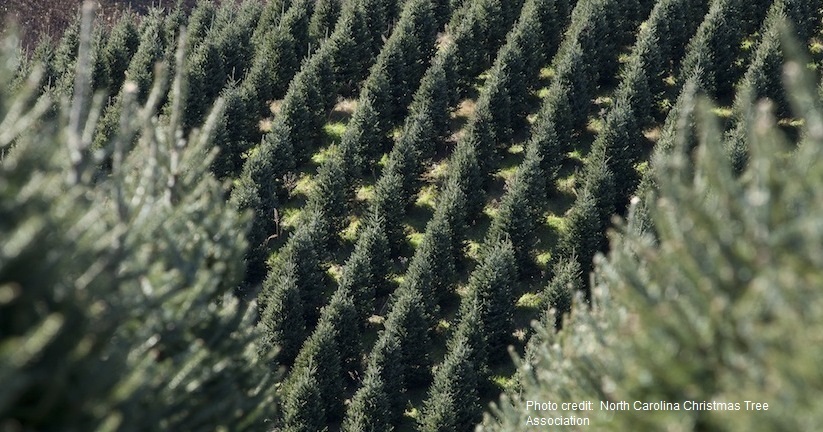AFM NEWS
O Christmas tree!

At American Forest Management, we love trees and welcome the opportunity to discuss Christmas trees! At this time each year, many families select the perfect tree to center their holiday celebrations around. Christmas trees are source of income for landowners in many areas of the United States. The top five Christmas tree-producing states by acreage are Oregon, North Carolina, Michigan, Pennsylvania, and Wisconsin. Each year in the US, approximately 30 million live trees are sold to families and there are approximately 350 million trees growing in the US on average each year.
Christmas tree farming requires a lot of effort to produce the beautiful trees we all enjoy. Most tree farms are located in areas where the climate and soil are suitable for tree production. The most common species used for Christmas trees include fir, pine, spruce, cypress, and cedar trees. Christmas trees are established by planting one-year-old seedlings. Generally the farmer plants 1,000-1,500 trees per acre of land. Following planting the farmer must control the competition of weeds around the tree through periodic mowing or use of herbicides so the tree can grow well. As they grow, the trees must be pruned each year to nurture their shape and form. Much of this pruning is done by hand with large knives. Farmers also must fertilize their trees and occasionally treat them for insect damage to keep them healthy and lush. Age to maturity varies by location and species but in general requires 7-12 years to produce a tree 6-7 feet in height.
Landowners with suitable sites that do not want to operate a tree farm can lease their acreage to other tree farmers. These leases can be based on a flat per acre per year fee or a smaller annual fee with the landowners sharing in a portion of the profit at time of harvest. The lease is typically one rotation in length minimum or 7-12 years, as the farmer must be able to recoup the investments made. Tree land leases can provide considerable income for landowners in good market areas with multiple commercial producers.
If you have already purchased your tree this year, you may note prices are higher than in the past. During the recession in 2008-2011, Christmas tree sales were down and some producers went out of business. This resulted in less trees being planted during those years; thus, leading to lower available supply of mature trees to sell currently, seven to nine years later. Tree retail price on average has increased from about $41.00 per tree in 2009 to $74.00 in 2016. Of the trees purchased, 77% are purchased from pre-cut lots; the remaining 23% are sold at cut-your-own farms.
Christmas trees, like all trees, are a renewable resource; they support farm families and landowners. Christmas trees are often planted on soils that are not favorable for other crops – they stabilize the soil and provide wildlife habitat. On the other hand, artificial trees are petroleum-based products that are typically used six to nine years before being discarded, where they remain in landfills for decades. Christmas trees are recyclable; municipalities use them for soil erosion barriers, fish habitat and feed areas, mulch production, and to create to brush piles for wildlife habitat. There is also the option to purchase a living rooted tree that you can plant after the holiday season.
American Forest Management can assist landowners in obtaining Christmas tree land leases in certain areas of the US where we operate. If you think you have property that may be suitable. we would like to speak with you.
We want to wish each of you Happy Holiday season with lots of time spent with family and friends.
